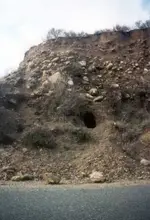MrGneissGuy
Jr. Member
- Joined
- May 30, 2017
- Messages
- 93
- Reaction score
- 59
- Golden Thread
- 0
- Location
- Los Angeles
- Primary Interest:
- Prospecting
Hey guys I've been wanting to start a thread where beginners like me can learn from experts like you. My hope is to have a thread where everyone can openly discuss things they look for when prospecting for gold. For example, someone might add (look for red coloring - this indicates oxidation) and any explanation about why it's important for finding gold. Other examples would be certain types of rocks and minerals, colors, shapes, faults and anything like that that you look for when prospecting. It would also be nice if you would include details of your location, obviously nothing too specific. I just mean "Northern California" or whatever you feel like including for reference.
What would be the perfect combination of geological signs indicating nearby presence of gold, besides finding gold...? Would it be granite, quartz, and red stuff nearby or what?
What would be the perfect combination of geological signs indicating nearby presence of gold, besides finding gold...? Would it be granite, quartz, and red stuff nearby or what?
Amazon Forum Fav 👍
Upvote
0






